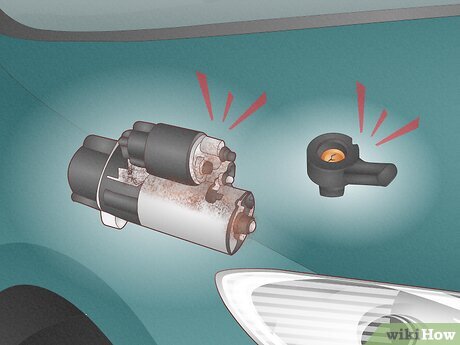Have you ever seen that little check engine light flicker to life on your dashboard and felt a twinge of anxiety? You’re not alone! Among the myriad of codes that can trigger this beacon, DTC P0456 stands out as one of the sneakiest culprits. While it may seem like just another technical glitch, this code indicates a minor leak within your vehicle’s evaporative emission control system—a silent issue that could have more significant implications if left unchecked. In this blog post, we’ll dive deep into what DTC P0456 really means, how it affects your car’s performance and emissions, and why addressing it promptly is crucial for both your vehicle’s health and our environment. Buckle up; it’s time to uncover the mystery behind that elusive minor leak!
Introduction to DTC P0456 and its significance
When it comes to vehicle diagnostics, the code P0456 might not be one you hear about every day. However, this small but significant trouble code signals a minor leak in your evaporative emission control system (EVAP). While it may seem like a trivial issue at first glance, neglecting DTC P0456 can lead to bigger problems down the line.
Understanding what this code means is crucial for any car owner who wants to maintain their vehicle’s optimal performance and ensure environmental compliance. Let’s delve into the intricacies of P0456 and examine why addressing it promptly is crucial. The health of your EVAP system hinges on recognizing these early warning signs, so buckle up as we navigate through everything you need to know!
Understanding the EVAP system and its role in preventing fuel vapor leaks
The Evaporative Emission Control System (EVAP) is a critical component of modern vehicles. Its primary job is to prevent fuel vapors from escaping into the atmosphere. This helps reduce air pollution and enhances overall vehicle efficiency.
At its core, the EVAP system captures evaporated fuel from the gas tank and routes it through a series of hoses and valves. The captured vapors are then directed back into the engine to be burned during combustion, ensuring nothing goes to waste.
Key components include the charcoal canister, which stores these vapors, and various sensors that monitor pressure changes within the system. Any malfunction in this intricate setup can lead to issues, such as DTC P0456—an indication of a minor leak that affects vehicle performance.
Understanding how your EVAP system works not only helps identify problems but also highlights its importance in maintaining environmental standards.
Symptoms of a minor EVAP leak and how to identify them
Identifying the symptoms of a minor EVAP leak can save you time and money. One common sign is the illumination of your check engine light. If this light appears, it’s often associated with codes such as P0456.
Another indication is a noticeable drop in fuel efficiency. If you find yourself refueling more frequently without any changes in driving habits, an EVAP issue could be at play. You might also notice a strong smell of gasoline around your vehicle. This odor suggests that fuel vapors are escaping into the atmosphere rather than being contained within the system.
Listening closely can help too. Hissing or whistling sounds coming from underneath your vehicle may indicate air escaping through cracks or leaks in the EVAP lines. Pay attention to these signs; they’re crucial for maintaining your car’s health and performance over time.
Common causes of DTC P0456 and how to diagnose them
DTC P0456 typically indicates a minor leak in your evaporative emission control (EVAP) system. Understanding the common causes can help you diagnose the issue effectively. One prevalent cause is a faulty gas cap. If it’s loose, cracked, or damaged, it can allow fuel vapors to escape. Check for proper sealing and consider replacing it if there are visible signs of wear.
Another potential culprit is damaged EVAP hoses. Over time, these hoses can degrade due to heat and exposure to various elements. Look for cracks or disconnections along their lengths.
A malfunctioning purge valve may also trigger this code. This component controls the flow of fuel vapors from the charcoal canister to the engine intake. If it’s stuck open or closed, you might experience issues. Lastly, inspect any wiring related to the EVAP system. Frayed wires or poor connections can cause false readings, triggering DTC P0456.
Fixing a Minor EVAP Leak: DIY or Seek Professional Help?
When facing a minor EVAP leak indicated by DTC P0456, you might wonder whether to tackle the fix yourself or consult a professional. If you’re handy with tools and have some automotive knowledge, DIY can be an appealing option. Simple tasks, such as replacing gas caps or checking vacuum lines, are often within reach.
However, diagnosing the exact source of the leak requires precision and accuracy. A smoke test is often needed to pinpoint smaller leaks that aren’t easily visible. This is where professional help shines; they have specialized equipment for accurate diagnosis.
If uncertainty creeps in or if you lack experience, it’s wise to seek expert assistance. An experienced mechanic will ensure your vehicle’s emission control system operates correctly and efficiently without compromising safety or performance. Balancing confidence and caution is key when addressing these sensitive issues.
Tips for maintaining your vehicle’s EVAP system to prevent future issues
Regularly inspect the gas cap. A loose or damaged cap can lead to P0456, so ensure it fits snugly and has no cracks. Keep an eye on your fuel levels as well. Avoid running out of gas frequently; it can create pressure issues in the EVAP system.
Consider scheduling routine vehicle maintenance checks with a trusted mechanic. They can spot potential problems early and help keep all systems functioning smoothly. If you notice changes in fuel efficiency, investigate immediately. Sudden drops might indicate a leak that needs attention.
Lastly, be cautious about where you refuel. Choose reputable stations to minimize the risk of contaminated fuel damaging your EVAP components over time.
Conclusion:
Addressing DTC P0456 is essential for the health of your vehicle and the environment. A minor leak in your evaporative emission control system may not seem significant, but it can lead to more serious issues if left untreated. Ignoring this code could result in increased emissions, failing an emissions test, or even damage to other engine components over time.
Regular maintenance of your EVAP system should be a priority. Keeping seals and hoses in good condition can prevent leaks from occurring. Conducting periodic checks will help you catch any potential problems early on.
Staying proactive about car care ensures that you’ll avoid costly repairs down the line while also contributing positively to air quality. Remember that every small step counts towards keeping both your vehicle running smoothly and our planet cleaner.

